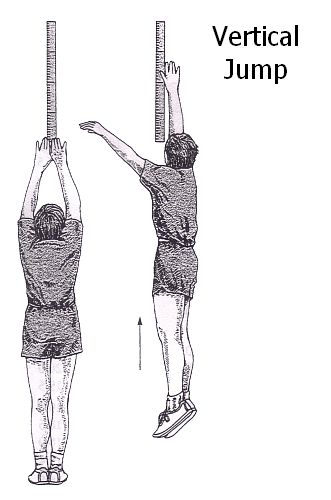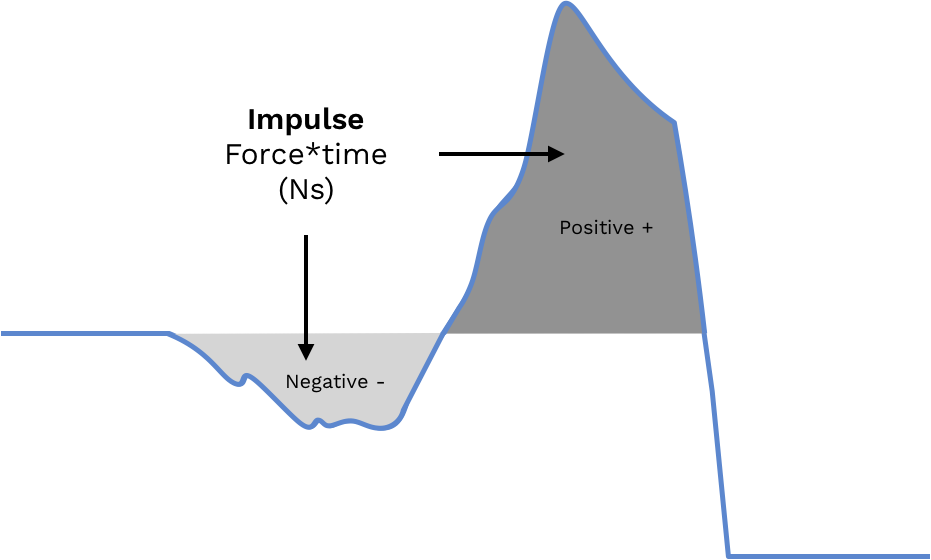This article discusses the different ways of deriving Jump Height and how it is presented after a user performs a Jump Scan.

The Short Answer:
Force plates are able to more accurately measure jump height than jump mats or Vertecs because they are able to measure the force applied during the jump. Both the flight-time method and the jump-reach method are prone to error for a variety of reasons. Calculating jump height utilizing the impulse-momentum theorem is the gold-standard, as the system is able to calculate an individual's take-off velocity (speed when they leave the ground). Once an individual leaves the ground, the only force acting on them is gravity... so using this data to find the jump height is just a simple calculation!
The Long Answer:
The popularity of a vertical jump assessment not only has familiarized athletes and soldiers but the countless coaches, trainers, practitioners, and interns who are tasked with measuring and recording this data. There are two primary tools currently in use: a Vertec type of system measuring based on how high an individual reaches, and a jump mat type system which measures based on how long an individual is in the air (flight-time method). While both of these systems can be useful, they can both have challenges with reliability and validity, especially when it comes to competitors (1).
Whether consciously or not, humans (and their neuromuscular systems) will often find amazing ways to cheat these systems. By definition, neither of these systems are actually measuring jump height, but using some less reliable and more “cheatable” metrics to estimate it. In testing preparation, some coaches will even teach these tips and tricks to their athletes (for example NFL Combine prep) to help boost their performance. This is not because these people are dishonest, they are simply competitive! In some situations, the results of these tests can have extremely significant consequences when large contracts are at stake!
So how do we define jump height? It almost seems like a stupid question, until you really stop to think about it… Is it the height between an individual's feet and the floor at their peak, what about the highest they can reach? The actual definition of vertical jump height is the change in height or max displacement of the center of mass of an individual when they jump. Instead of estimating jump height with a reach or flight time, force plates calculate the vertical displacement of an individual's center of mass using the measured kinetic (force production) data, the Impulse-Momentum Theorem, and the Law of the Conservation of Energy. While sounding extremely complicated the end result is a truly reliable and valid measure of an individual's performance.
While most of us have a simple understanding of the more basic physics concepts, when Impulse-Momentum Theorem gets brought up in conversation rarely are people familiar. Luckily, the impulse-momentum theorem is logically equivalent to the much more well-known concept of Newton’s second law of motion (f=ma), it states: “the change in momentum of an object equals the impulse applied to it.” For our understanding it can be simplified to the formula:
I = m * v
Impulse (I) is defined as “the integral of a force over the time interval for which it acts.” To simplify, it is a measure of the magnitudes of force applied and their duration. Impulse is an often misunderstood (and in turn ignored) concept as it can be a bit confusing, but it is perhaps simplest to think of impulse as a "summation" of force applied over time. The total sum of force we apply (the quantity of force and for how long we apply that) dictates our movement or displacement, and in turn, can tell us exactly how fast or far (or high) an individual moves.

When a vertical jump test is performed on a force plate, these force variables are measured over time and impulse can easily be calculated within the software. The individual's mass (m) is constant, and (thanks to gravity) is also measured by the force plate. Using these two pieces we are able to solve for the subject's take-off velocity (v), the speed they (their center of mass) are going at the time they leave the ground! What goes up, must come down. Since we have the velocity of the individual going up, we know that the rate will be 9.81 m/s² due to the acceleration of gravity (g). Armed with this information, there must be a calculation to find the jump height, right?
Heightpeak = ½ * (vtakeoff² / 9.81)
Right. The above calculation can then be used, utilizing takeoff velocity we can calculate the true vertical jump height of an individual. This formula is derived from the Law of The Conservation of Energy which states that “the total mechanical energy in a system remains constant”. That is, the total energy in the system (person jumping) will be the same as it at take off as it is at the individual's peak or max height of the jump. The kinetic energy at takeoff is derived from the kinetic (force) data, allowing us to calculate the potential energy at the peak of the jump, and in turn “solve for x” to find jump height. The individual's jump height is actually calculated before they even hit the ground, completely removing errors due to landing position. Thanks, physics!
Utilizing cheaper solutions, accurately measuring jump height can be trickier than it seems. As always, you get what you pay for. Even when it comes to force platforms, the accuracy will largely be determined by the quality of the hardware itself. With the high amount of validity in jump testing across all sports, more and more coaches are performing them. There are countless types of jump tests and a growing list of algorithms using jump height as a factor (RSI perhaps the most popular), but without standardization and reliability across large enough data sets creating more meaningful value out of this data is impossible. If the goal is a purely quantitative measure like jump height, and high reliability isn’t a huge concern a simpler solution may be “good enough.” The true value of utilizing a force platform isn’t just a more accurate jump height, but an ability to objectively measure the quality of an individual's movement, by evaluating their force production patterns relative to norms.
References:
- Attia, A., et al. "Measurement errors when estimating the vertical jump height with flight time using photocell devices: the example of Optojump." Biology of sport 34.1 (2017): 63.
